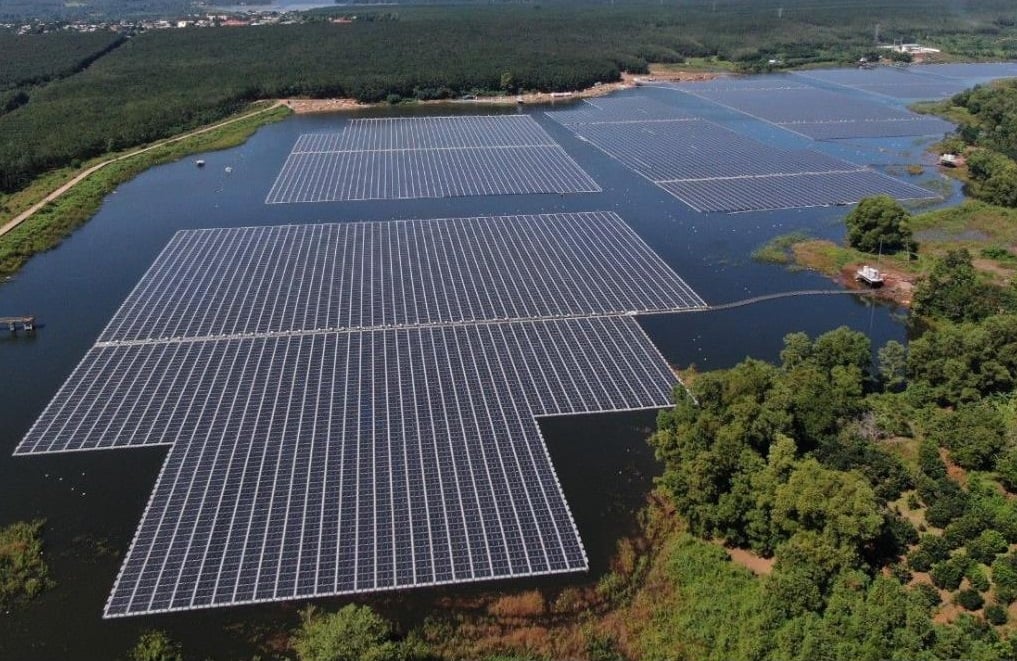
Four years on from the birth of its solar boom, Vietnam’s large-scale solar industry has been stunted by a lack of generic power purchase agreements (PPA), while the rooftop sector, through strong in the commercial and Industrial (C&I) segment, also faces hindrances from government.
The main growth in grid-connected PV took place between 2018 and 2020, shooting well past the government’s initial expectations by a factor of four or more, but the rug has been pulled out from under the feet of the bold developers who plunged into the southeast Asian market despite all its well-documented bankability risks.
Unlock unlimited access for 12 whole months of distinctive global analysis
Photovoltaics International is now included.
- Regular insight and analysis of the industry’s biggest developments
- In-depth interviews with the industry’s leading figures
- Unlimited digital access to the PV Tech Power journal catalogue
- Unlimited digital access to the Photovoltaics International journal catalogue
- Access to more than 1,000 technical papers
- Discounts on Solar Media’s portfolio of events, in-person and virtual
Or continue reading this article for free
Since the boom, there have been some retroactive forces to limit solar development, which is understandable to some extent, says Gavin Smith, director of UK-based consultancy Clean Energy Advisors, who specialises in Vietnam. The sudden advancements caused considerable technical, financial and political problems for the government, adding stress to its management of energy markets.
Mobilising enough capital, equipment and expertise to afford the initial burst in solar deployment was a remarkable achievement, says Frederick Burke, senior advisor at law firm Baker & McKenzie. It went from close to zero to a significant portion of the country’s energy mix, with around 16GW of PV deployed today, split between 8GW of large-scale projects and 8GW of rooftop installations.
However, Vietnam did not have the transmission lines set up to accommodate all the new capacity and some plants were built in remote locations or were highly concentrated in one province leading to curtailment issues. Nonetheless, Burke says that all developers knew the risks they were taking when they entered the market. There was much prior discussion on the PPA that needed to be signed with the national monopoly utility EVN, because it allowed for EVN to choose not to pay for energy generation and the legislation contained onerous termination terms.
PPA debacle goes on
But PPA conditions have become even more challenging in the last two years. In the past, there was a standardised solar PPA at a fixed price, but now any large-scale PV projects have to negotiate every term with EVN, says Smith.
“Foreign investors could see lots of holes in the original PPA as it didn’t meet international standards, but at least they didn’t have to spend five years negotiating it word by word with EVN,” says Smith. “They could actually look at a document, take a risk assessment on it, and then make the decision to invest or not invest at a price that was determined in advance. That’s gone. As of June 2020, that offer is no longer on the table.”
The PPA uncertainty leaves developers in what Smith calls a “horrible grey zone”, where they cannot use an off-take agreement to attract financing and build a development case even if they have secured land and preliminary licensing. Many industry members were waiting on the Ministry of Industry and Trade (MOIT) and the World Bank to launch and facilitate a transparent auction system in 2021 or 2022 instead, but they are still waiting.
To fix the issue, the government issued Circular 15, which was an instruction to EVN and MOIT to make one-off negotiations to buy power generated from new solar developments that had reached a certain stage in the licensing process. However, there has been confusion about which projects can access this very limited market, says Smith, while the price to be paid for the electricity is subject to a complex formula which is likely to be suspended in negotiations with EVN for many years.
The Vietnam Business Forum (VBF) sent a letter to MOIT in November this year noting that it is still uncertain how the tariff for a specific transitional solar or wind plant will be defined, and the industry, which has already faced major delays due to the pandemic, is in need of a timely solution. Thus, it lobbied the ministry for two changes:
- Allow the issuance of acceptance certificates for these transitional plants so that they could be commercialised. Payments to investors will happen later once the tariffs are determined.
- Consider accepting a temporary floor tariff, for instance, US$6.95 cents/kWh which is currently applied to cross-border PPAs for onshore wind projects, until a mechanism is finalised and implementable by the competent authorities.
Smith, who does not think that VBF’s letter will change government policy, compares the situation with the US in the 1970s.
“Jimmy Carter set a generous and attractive price for solar and then it was cut to zero,” he says. “That’s effectively what Vietnam has done. You set a high price to attract everybody in – 80 developers succeeded in the first round of Vietnam’s developments – but then you cut it to nothing. So, you’ve gone from 100 miles an hour to zero.”
He contrasts this example of the US and Vietnam with Thailand, which set a price on solar and then cut the rate twice in order to sustainably get down to a hard core of the most efficient developers who are able to operate at the lowest cost
“The removal of standardised PPA with a fixed price acceptance, and the predetermined set of terms upon which you would sell power to EVN has set the industry back dramatically,” Smith concludes.
